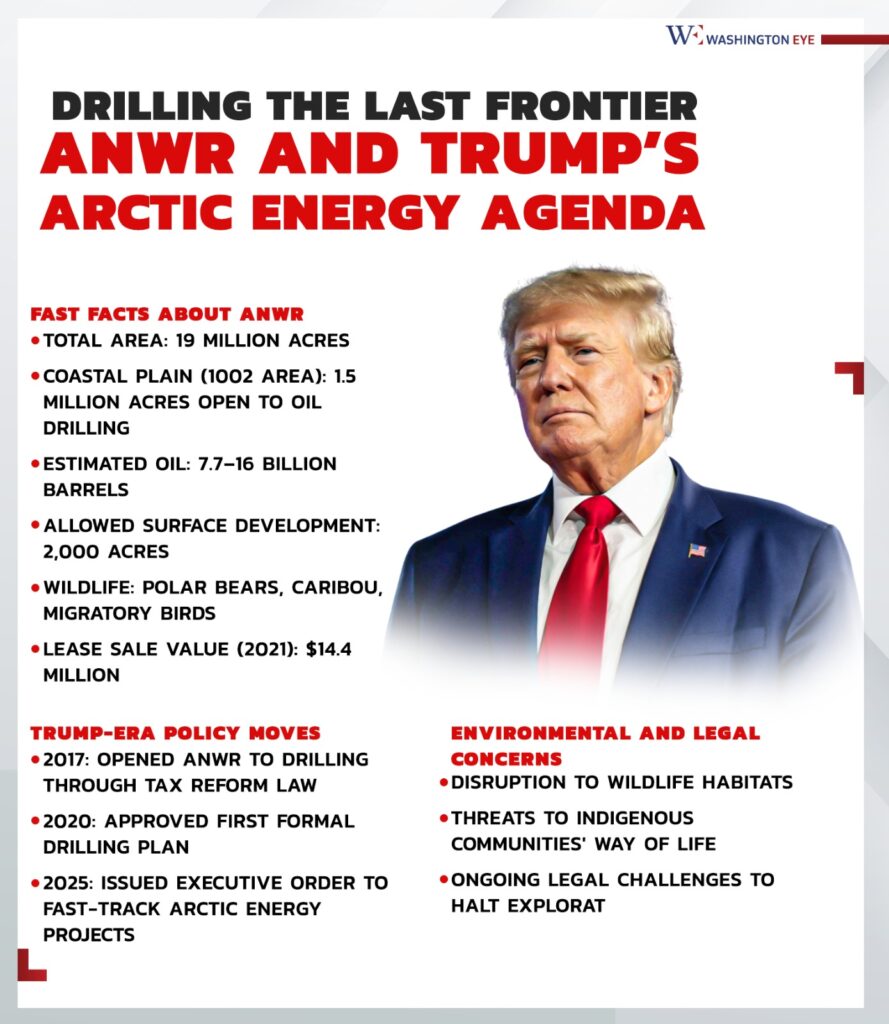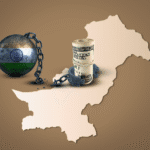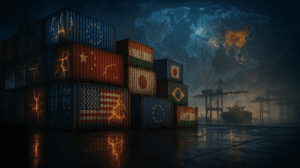Under President Donald Trump’s second term, America’s foreign policy playbook has been flipped, rewritten, and autographed with his signature brashness. Gone is the careful calibration of diplomacy and multilateralism; in its place stands a doctrine of deals, dominance, and disruption. Nowhere is this more starkly illustrated than in the frigid frontiers of the Arctic and the simmering sands of the Middle East.
From melting permafrost to mine-riddled deserts, the Trump administration is pursuing parallel campaigns: unlock natural resources, reassert American strategic power, and redefine the global order with Washington squarely in charge. These regions, once bound by geography alone, are now tied together by a foreign policy that values access over alliances and leverage over legacy.
The Arctic: Cold Front, Hot Stakes
The Arctic has transformed from a remote, ice-locked expanse into a geopolitical chessboard where the U.S., Russia, and China vie for influence. Under Trump, the U.S. is no longer content to play defense.
In March 2025, Trump approved a sweeping five-year leasing plan for offshore oil and gas drilling across the Alaskan Arctic coast. This follows the reversal of several environmental protections, including restrictions on the Arctic National Wildlife Refuge (ANWR), reigniting fierce debate over ecological degradation and indigenous rights.
But for Trump, it’s about dominance. “We’re not going to let China or Russia own the Arctic,” he declared at a rally in Anchorage. And yet, critics point out the irony: while Moscow has over 40 icebreakers and Beijing is rapidly expanding its polar capabilities, the United States has just two aging heavy icebreakers—one of which is frequently out of service.
Trump has pledged $4 billion for a new icebreaker fleet, to be built with private sector partnerships and military cooperation. However, construction delays and cost overruns have plagued past efforts, leading some to question whether this will be yet another symbolic announcement with little real-world impact.
China, meanwhile, calls itself a “near-Arctic state” and is investing heavily in the Polar Silk Road. With infrastructure investments in Iceland, Russia, and Greenland, China is poised to project economic power across the Arctic. Russia has militarized its Arctic territory, building airstrips, radar stations, and port facilities while patrolling the Northern Sea Route with ice-hardened warships.
The U.S. under Trump sees these moves as a threat to global balance. The Arctic, once the domain of scientists and seals, is now part of a broader great-power rivalry—and Trump wants in.
The Middle East: Where Sand Meets Strategy
Meanwhile, Trump’s May 2025 tour of the Middle East has sent diplomatic shockwaves through the region. The centerpiece? His unprecedented meeting with Syria’s new president, Ahmed al-Sharaa, and the stunning announcement that the U.S. would lift sanctions on Damascus.
This is more than a handshake. Trump’s visit marked the first official U.S.-Syria engagement in over two decades. In a surprise twist, Sharaa offered the U.S. access to mineral and energy deals in exchange for reconstruction support, alongside a symbolic olive branch: a proposal to join the Abraham Accords. Trump, never one to shy away from transactional diplomacy, accepted.
The impact was immediate. Israel expressed quiet unease. European allies voiced concern. But Arab states cautiously welcomed the shift. In Trump’s view, this is the art of the deal—bridging decades of conflict with investment incentives and economic leverage.
But the most audacious proposal came in Qatar, where Trump unveiled plans for a U.S.-controlled “Freedom Zone” in Gaza. The idea: remove Hamas, temporarily relocate Gaza’s civilians, and rebuild the enclave into a model of prosperity and security—funded by Gulf capital, run with U.S. oversight.
Critics blasted the plan as neocolonial, dangerous, and disconnected from the grim reality on the ground. Gaza is not a clean slate. It’s a shattered strip of territory littered with unexploded ordnance, sewage, collapsed buildings, and tens of thousands of corpses. The Israeli assault that began on October 7 has turned the region into a humanitarian disaster zone. Any redevelopment would require years of demining, reconstruction, and trauma healing—not just capital and cement.
Nevertheless, Trump’s camp is pressing forward. Qatar has pledged an initial $5 billion, and Saudi Arabia hinted at additional support. The administration argues that the alternative—perpetual war and chaos—has failed. But as one analyst quipped, “You can’t build a beachfront resort on a mass grave.”
Oil, Order, and Opportunity
Energy is the throughline between Trump’s Arctic and Middle East gambits. In both regions, fossil fuel access is seen not just as an economic prize but a geopolitical weapon. The Arctic promises untapped reserves that could challenge Russian and Norwegian production. The Middle East remains the heart of the global oil map.
Trump’s energy diplomacy has pivoted around major defense and technology deals. In Riyadh, he signed a record $142 billion arms agreement and secured $600 billion in Saudi investments in American industries—from semiconductors to rare earth minerals. Nvidia, Cisco, and other U.S. tech giants are partnering with Gulf states on AI development and military applications.
In Qatar, Trump oversaw the signing of a $10 billion deal to upgrade Al-Udeid Air Base, along with Qatar Airways’ commitment to purchase 160 Boeing aircraft. These deals blend commerce with security, reinforcing alliances while pumping billions into the U.S. economy.
America Alone? Or America First?
At the heart of Trump’s dual-theatre foreign policy is a profound belief in unilateralism. Whether it’s Arctic militarization or Gaza redevelopment, the administration views coalitions as cumbersome and international institutions as irrelevant.
In the Arctic, this means bypassing environmental protocols and Arctic Council consensus. In the Middle East, it means cutting out the UN and negotiating directly with political leaders. For Trump, diplomacy is a one-on-one poker game—not a multilateral committee meeting.
This doctrine carries risks. Climate scientists warn that Arctic drilling could accelerate melting and cause irreversible damage to Earth’s climate systems. Legal experts argue that forcibly relocating Gaza’s population, even temporarily, may violate international law. And America’s traditional allies—from Canada to France—are increasingly wary of Trump’s unpredictable moves.
Still, the president remains undeterred. He sees the Arctic as the next frontier of competition. He sees the Middle East as ripe for redevelopment. And he sees himself as the only man bold enough to do both.
A World Recast in Trump’s Image
From sand to snow, the Trump administration is redrawing the map of American power. In the Arctic, the U.S. is racing to catch up to its rivals by doubling down on energy extraction and military infrastructure. In the Middle East, Trump is forging new alliances, rewriting old conflicts, and betting big on reconstruction schemes that blur the line between diplomacy and development.
It’s a high-risk, high-reward strategy that prioritizes dominance over diplomacy and profit over process. Whether it yields a stronger, more secure America—or leads to greater instability and global friction—will depend not just on the deals signed today, but on the consequences they unleash tomorrow.




















